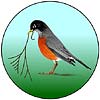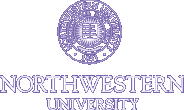Darwin and Evolution, Inextricably Linked with Natural History Collections

With all due respect to university departments, we believe that natural history museums are the primary cradles for evolutionary research. True, most people see “dead birds” when they take a tour of the collections that we are privileged to curate at The Field Museum, but in any collection tray we pull out, we see the products of the evolutionary process. Collections were essential to Darwin. What he saw in nature could often be examined in more and clearer detail with collections because they documented the variation existing in the natural world. Darwin made and published on collections of all kinds throughout his life. From beetles and barnacles of England to South American birds and fossils collected during his voyage with the Beagle, Darwin gained insight from collections that crystallized his thoughts leading to the Theory of Natural Selection. Through collections, he could see that variation could be related to the age and sex of individuals or it could be related to the time of year they were collected, or it could be related to the population from which they came and ultimately from different natural selection regimes across geography.
As time passes, specimens in natural history collections are becoming even more valuable because these collections come to represent what was and this can be contrasted with what is in the present (and will be in the future). In the 300 years or so that natural history collections now document, we can look for change and the results are intriguing. Recently, scientists from the University of California’s Museum of Vertebrate Zoology have resampled the collecting sites of the great naturalist and curator Joseph Grinnell and his colleagues in the mountains of California (Mortiz et al. 2008) and can document changes in the distributions of small mammals and other animals that are consistent with the effects of climate change. In another example, Pergams et al. (2003) documented shifts in gene frequencies on a local scale in Peromyscus mice in northern Illinois using series from museum collections and modern sampling. While, such shifts could represent ecological change, rather than evolutionary change, it is like having a nearly complete fossil record for the period in question, and one can look for evolutionarily significant responses as well. Thus, we can study how idiosyncratic evolution is, or the reverse, how often patterns are shared in different lineages. Through natural history collections, we can study the affects of humans on rates and directions of evolutionary change in other plants and animals.
Darwin was one of the first to popularize the use of collections for their scientific value. In the Victorian age, collections were still largely viewed as closets of curiosities, but Darwin saw more. He saw patterns that he realized had to be generated by forces in nature. Today, in modern natural history museums like ours, detailed information is collected with every specimen. Collections are studied in our labs and specimens are loaned for study to scientists around the world as never before. We can generate DNA sequence data from tissue samples, we can take detailed spectrophotometric readings on color variation or analyze the isotopic composition of feathers to study all kinds of questions associated with the evolution and ecology of our study organisms.
It is unproductive to speculate too much about what Darwin would have thought of this or that in regards to modern science, but from his writings, we think it is fair to say that he would be highly satisfied that so much of what he wrote, that was the result of so much detailed study of collections, is accepted by scientists today. At the same time, he would not be surprised that we still have so much to learn about the details and complexities of evolution. He put it best at the end of On the Origin of Species: “…from so simple a beginning endless forms beautiful and most wonderful have been, and are being, evolved.” Modern natural history collections and the scientists that care for and study them continue to be at the forefront of efforts to understand these endless forms as they continue to evolve.
References:
Mortiz, C., J. L. Patton, C. J. Conroy, J. L. Parra, G. C. White, and S. R. Beissinger. 2008. Impact of a century of climate change on Small-Mammal communities in Yosemite National Park, USA. Science 322: 261-264.Pergams, O. R. W., W. M. Barnes, and D. Nyberg. 2003. Rapid change of mouse mitochondrial DNA. Nature 423:397.
